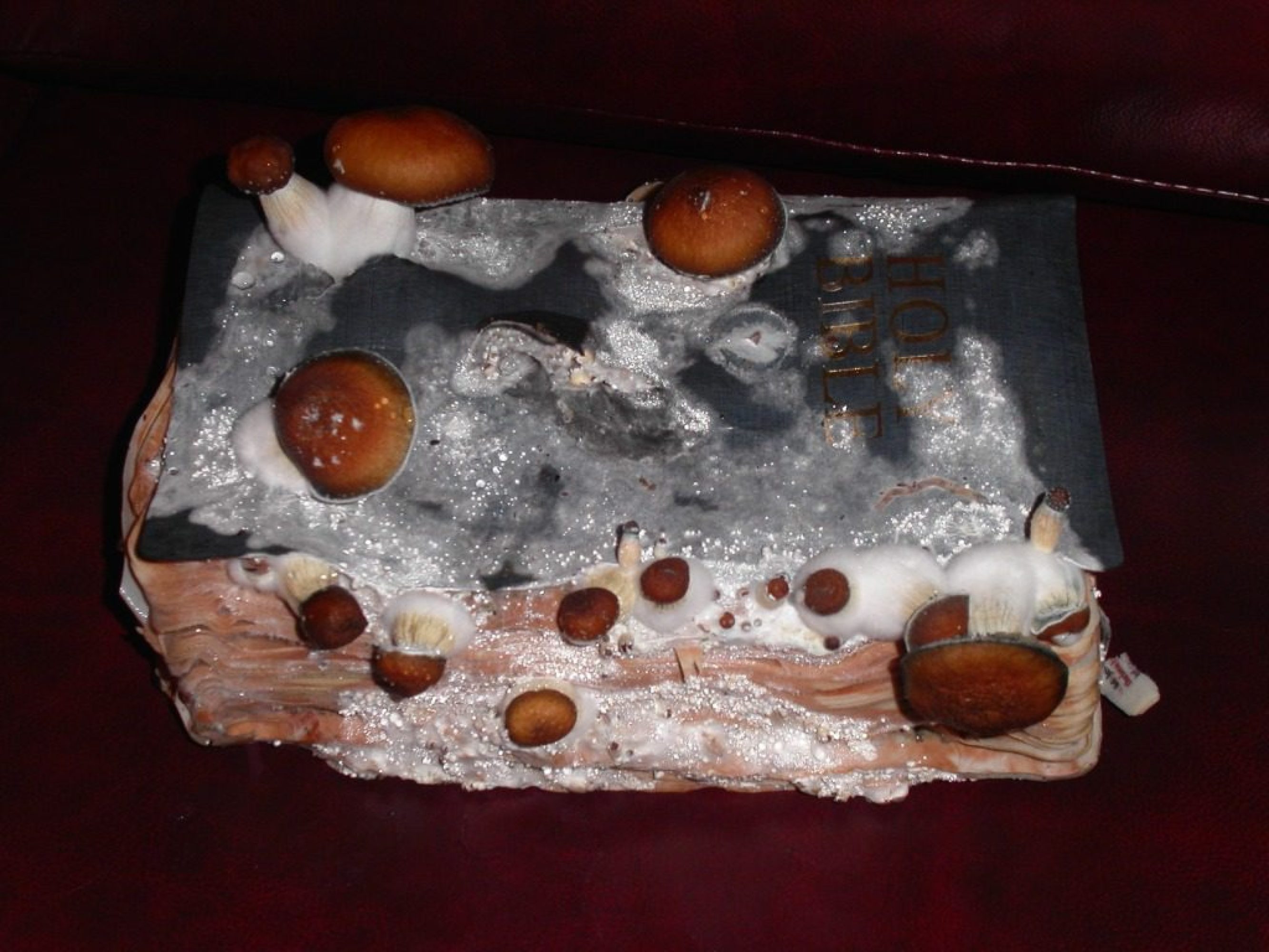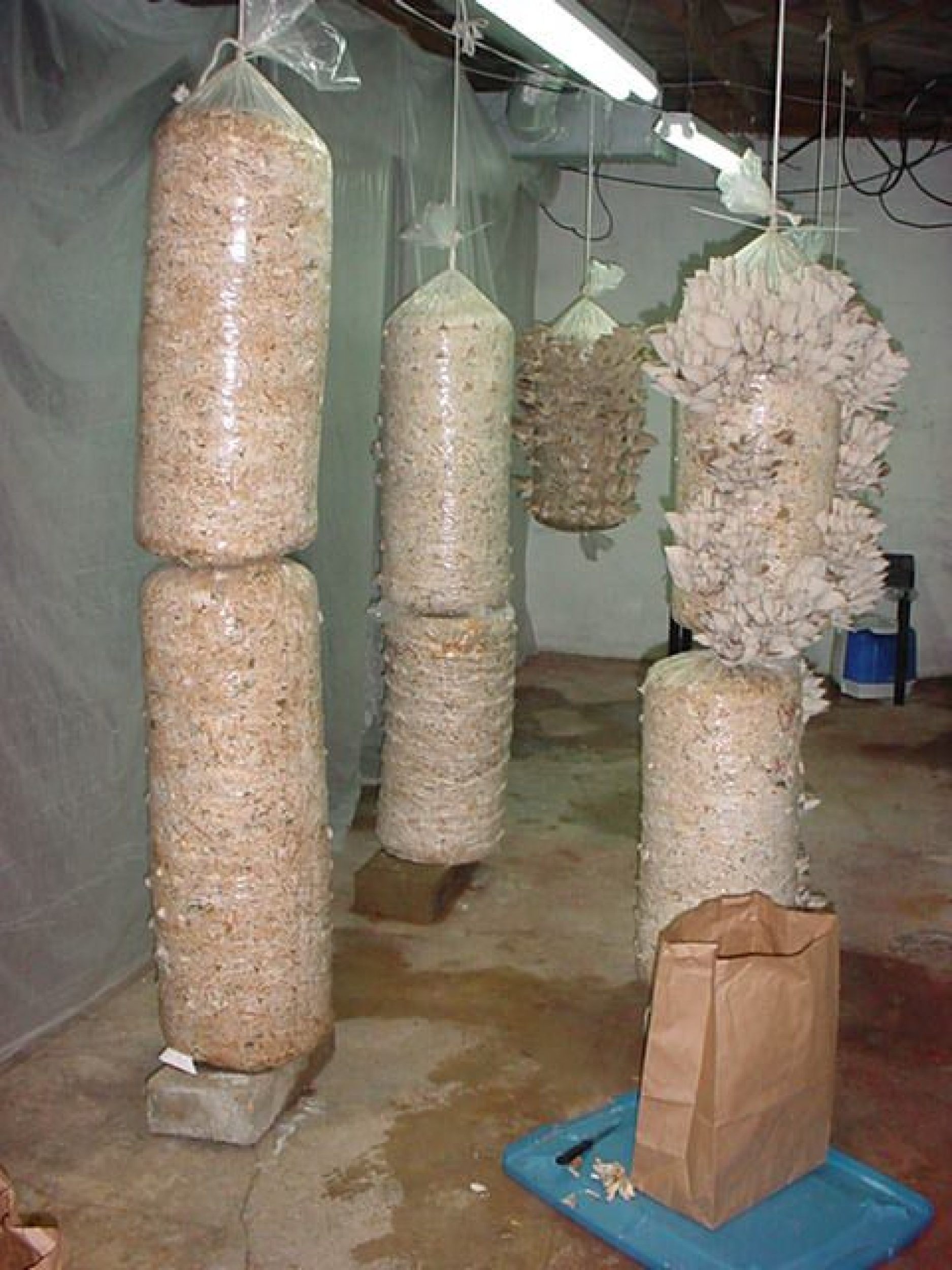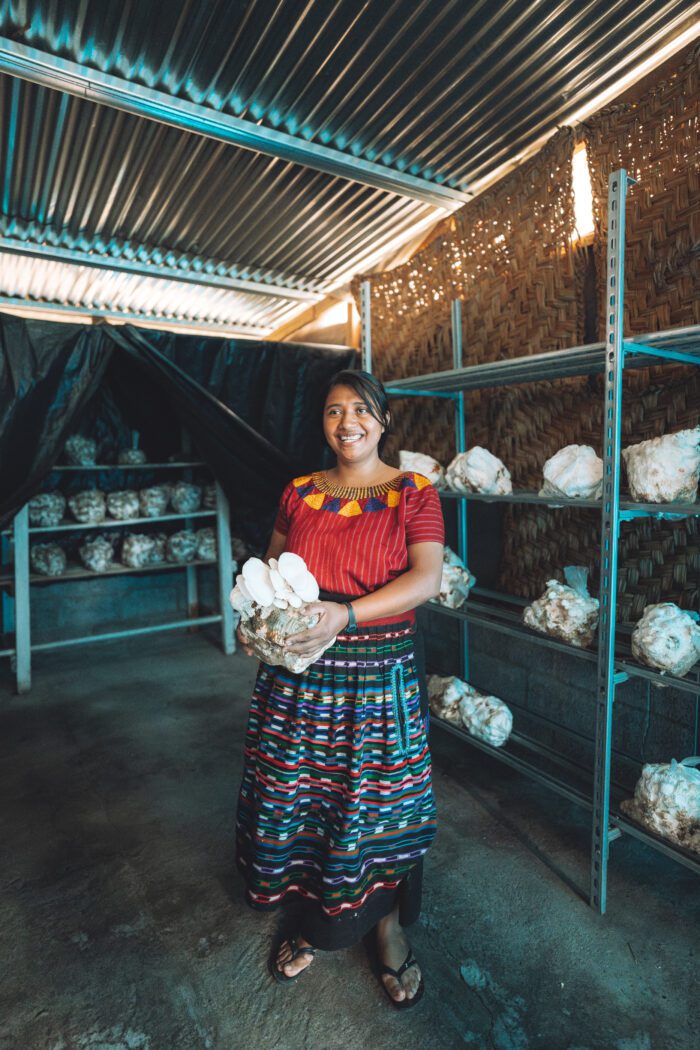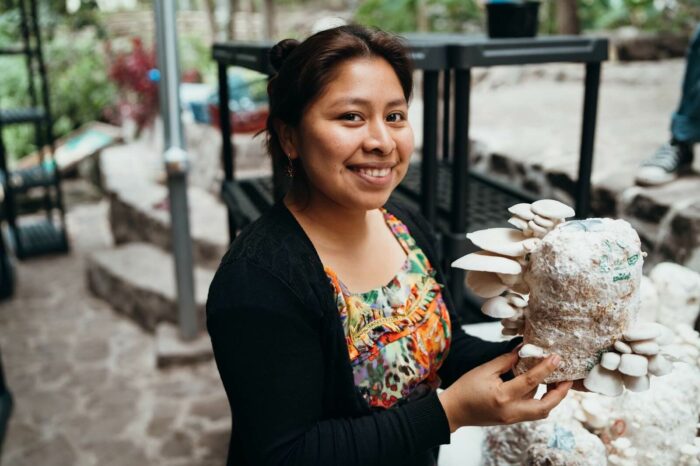Welcome to Part II of our “How to Grow” series, where we dive into the details of cultivating mushroom species from a petri dish to the mushroom fruit body. Last week we looked at Lion’s Mane. This week, we wanted to zoom in on what we at the Fungi Academy like to call the Swiss Army Knife of Fungi: Oyster mushrooms, aka Pleurotus ostreatus. So pull out that red cross bedazzled blade and let’s learn how to grow Oyster mushrooms!
Ahhh, the Oyster Mushroom, known for eating practically any substrate and for oftentimes being the first mushroom cultivated by thousands of novice mushroom growers (other than Psilocybe, of course).
Many mycologists claim Oyster mushrooms are the easiest mushroom to grow, and we wouldn’t argue that point. Why?
It grows all over the globe, can survive all kinds of conditions, and will grow on nearly anything it can get its hyphae onto. All sorts of materials have been used as Oyster mushroom food, with people fruiting Oyster mushrooms from substrates as varied as:
- Books📚
- Cigarette buts🚬
- Lemongrass🍋
- Coffee grounds☕
- Cardboard📦
- Jeans👖
- Straw🌾
- Corn cob🌽
- Coco Coir 🥥
- Oil🛢
We could go on like this for a while but you get the picture. Oyster Mushrooms are classic omnivores. Heck, they even actively hunt for nematodes with tiny lasso-like hyphae to capture their prey. Once caught, the Oyster mushroom feasts on its victim for the sweet nitrogen! Weird, wild and wondrous! But let’s get started, no?

P. cubensis growing on the bible

Oyster mushrooms growing on 6 foot columns of pasteurized straw
Fishing for Oyster Mushroom Cultures
The first step in learning how to grow Oyster mushrooms is finding a strong clean mycelium culture. You could buy a culture on a petri dish, a liquid culture in a syringe, or even clone an Oyster mushroom from your local grocery store or farmer’s market.
But since Oyster mushrooms basically grow anywhere during most seasons, your best and cheapest bet might be to go out for a forage in search of a local variety you can then propagate on your own!
But if that’s just not your style, we highly recommend getting a culture from our brother Paul from Fungaia.life
Check out some of the sweet mushrooms we’ve grown from his Pleurotus ostreatus culture.

How to Grow Oyster Mushroom Mycelium
Once you’ve got yourself a solid culture, the next step in learning how to grow Oyster mushrooms is to expand your culture onto some agar! To accomplish this, you can either pour some petri dishes yourself or get them pre-poured and shipped to your house!
If you have Sam’s Super Anal Still Air Box Technique down, or you’ve gotten yourself a Laminar Flow hood, you can pour them yourself and start propagating your very own culture! And if you’re at that stage, step back for a moment and appreciate how far you’ve come!
Like we mentioned before, Oysters are omnivores and eat basically anything. Keeping the nutrition low in your agar will help keep contamination out. You can expect your culture to move fast on this substrate and completely colonize the plate in less than 10 days.
At this stage, the ideal incubation temperature is between 70-75°F (21-24°C).
Swimming in Oyster Mycelium
In 1932, James Sinden developed and patented “grain spawn,” a seeding system to grow mushrooms that revolutionized the mushroom industry. Boy are we forever grateful for Mr. Sinden!
Since Oyster mushrooms don’t discriminate, they’ll eat anything: bird seed, whole oats, millet, rye, corn, whatever! We at Fungi Academy have a rule: as long as it’s cheap and sustainable, you’re good to go.
In this step of learning how to grow oyster mushrooms, the ideal incubation temperature is the same as before, that is, between 70-75°F (21-24°C).

Try our Mushroom Cultivation Course
for FREE
Omnivore Oysters
You’ve gotten to the stage where the Oyster mushroom truly begins to shine! While most other mushroom species are picky and need a specific wood, sterilized substrate, or particular conditions, the Oyster mushroom doesn’t give a sh!t.
It’s ferocious, hardy and ever-hungry. That’s why most people growing Oyster mushrooms worldwide don’t even bother sterilizing their substrate. For Oysters, pasteurization is more than enough. Pasteurization is normally accomplished by keeping the substrate between 155 and 180°F (68-82°C) for an hour.
But we mushroom cultivators are some thrifty folks with some nifty tricks up our sleeves. Since Oyster Mushrooms are so durable, they can withstand really high pH levels, also known as alkaline environments.
So you can simply soak your substrate in water, add anything that raises the pH to 13–we use hydrated lime, also known as pickling lime–and let the substrate sit submerged in this alkaline mixture for 24 hours. Boom, you’ve got yourself a cold water pasteurized substrate!
While this technique doesn’t work well with most other mushrooms, it’s an excellent solution for the homesteader, permaculture practitioner, or low tek mushroom cultivator like our neighbor Tomasasa!

We know there are a lot of people living in cities wondering how they too can grow mushrooms on a small, sustainable scale. Well, another popular technique for how to grow Oyster mushrooms is to use freshly used coffee grounds. This technique is so powerful because it transforms one of society’s largest natural waste products into delicious Oyster mushrooms. When you’re living in a city, that’s as close to permaculture as you can get!
Since the coffee brewing process is a form of hot water pasteurization, you can simply inoculate the freshly used grounds (within 24 hours of brewing is recommended) with your Oyster mushroom grain spawn. When done in less than ideal– i.e. dirty–conditions or with slightly weak spawn, you can sometimes encounter a lot of contamination. As a result, we don’t recommend beginners try this approach unless you’re not afraid of failure. But if you’re willing to fuck around and find out, give it a rip and see what she’ll do!
And for those who want to learn how to grow Oyster mushrooms the professional way, you can apply the Master Mix recipe we mentioned in our How to Grow Lion’s Mane article to your Oyster mushroom grow bag without a problem.
Really, any form of sterilized supplemented substrate–another common recipe is 75% hardwood fuel pellets and 25% oat bran, hydrated at 60%–will work just fine.
Here at the Fungi Academy, we even have a culture that works on pine wood, typically thought to be unsuitable for growing mushrooms due to its natural antifungal compounds!
By now you know it: this stage of the process is no different and the ideal incubation temperature is between 70-75°F (21-24°C).
How to Grow Oyster Mushroom Fruits
Although everything else is easy peasy, the trickiest part of learning how to grow Oyster mushrooms is fruiting oyster mushrooms indoors.
Why?
They have an insatiable appetite for fresh oxygen, and surprisingly enough, light!
Don’t get us wrong, Oyster mushrooms do not photosynthesize. But that doesn’t mean they like to grow in the dark! When your Oyster mushrooms have long stems and small caps instead of the massive dinner plate sized caps that often grow in the wild, it’s usually a sign that they need more oxygen and/or light.
Another reason they’re a bit onerous to fruit indoors is the massive amount of spores they release as the fruits mature.

PRO TIP: If you’re growing Oyster mushrooms in an enclosed space, always wear a respirator mask when you enter the room to avoid inhaling spores and, with time, developing respiratory issues. This is not an issue if you are a home style cultivator but in that case, always make sure you exhaust your fruiting room to the outside and never inside your home.
Generally speaking, these are the ideal conditions to create in your fruiting room when you’re learning how to grow Oyster mushrooms.
Primordia: 50-60°F (10-15°C)
Fruit Body: 50-70°F
Humidity: 88%
Fresh air exchanges (flushing your fruiting chamber of old air and bringing in fresh oxygenated air): 6 to 8 exchanges per hour
There you have it: how to grow Oyster mushrooms from start to finish. It’s straightforward, difficult to mess up, and will lead to an abundance of delicious, nutritious and beautiful mushrooms!
Have you ever grown your own Oyster mushrooms? Let us know in the comments below!
See you in Part 3!
about the authors
With 10+ years of mushroom growing experience and more than 2,000 students taught since 2019, Jasper has set out on a mission to make learning mushroom cultivation Easy, Fun, and Exciting!
This Myconaut did not fit in the traditional academic system, AT ALL. Yet, his thirst for knowledge carried him on a path of life-long learning. With the skillset of a self-taught teacher, he aims to make the art and science of mushroom cultivation accessible to everyone aspiring to be a citizen mycologist.


Sam is a writer, award-winning journalist and professional mycologist from the United States who arrived at the Fungi Academy one midsummer’s day in 2019 and left six weeks later with lifelong friends and a passion for mushroom cultivation.
In the past year three years, he’s built a laboratory and fruiting room in his home, cultivated and foraged over 20 species of gourmet and medicinal mushrooms, started a medicinal mushroom tincture business and returned to the Fungi Academy to teach his techniques to students.

